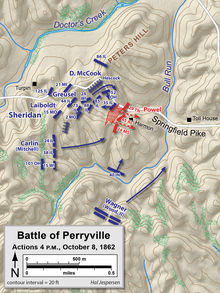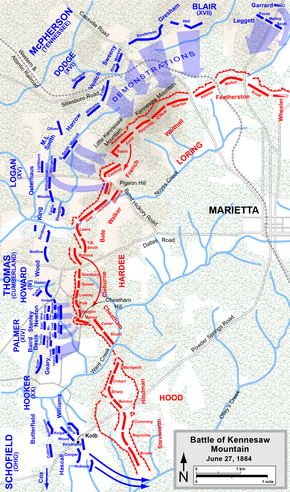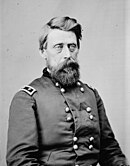
The Battle of Resaca, from May 13 to 15, 1864, formed part of the Atlanta Campaign during the American Civil War, when a Union force under William Tecumseh Sherman engaged the Confederate Army of Tennessee led by Joseph E. Johnston. The battle was fought in Gordon and Whitfield Counties, Georgia, and is generally viewed as inconclusive.

The Battle of Missionary Ridge, also known as the Battle of Chattanooga, was fought on November 25, 1863, as part of the Chattanooga campaign of the American Civil War. Following the Union victory in the Battle of Lookout Mountain on November 24, Union forces in the Military Division of the Mississippi under Maj. Gen. Ulysses S. Grant assaulted Missionary Ridge and defeated the Confederate Army of Tennessee, commanded by Gen. Braxton Bragg, forcing it to retreat to Georgia.

The Battle of Kennesaw Mountain was fought on June 27, 1864, during the Atlanta Campaign of the American Civil War. The most significant frontal assault launched by Union Major General William T. Sherman against the Confederate Army of Tennessee under General Joseph E. Johnston, it produced a tactical defeat for the Union forces but failed to deliver the result that the Confederacy desperately needed: a halt to Sherman's advance on Atlanta, Georgia.

The Battle of Jonesborough was fought between Union Army forces led by William Tecumseh Sherman and Confederate forces under William J. Hardee during the Atlanta Campaign in the American Civil War. On the first day, on orders from Army of Tennessee commander John Bell Hood, Hardee's troops attacked the Federals and were repulsed with heavy losses. That evening, Hood ordered Hardee to send half his troops back to Atlanta. On the second day, five Union corps converged on Jonesborough. For the only time during the Atlanta Campaign, a major Federal frontal assault succeeded in breaching the Confederate defenses. The attack took 900 prisoners, but the defenders were able to halt the breakthrough and improvise new defenses. Despite facing overwhelming odds, Hardee's corps escaped undetected to the south that evening.

The siege of Knoxville saw Lieutenant General James Longstreet's Confederate forces besiege the Union garrison of Knoxville, Tennessee, led by Major General Ambrose Burnside, in the American Civil War. When Major General William T. Sherman approached Knoxville with an overwhelming Union force, Longstreet ended the siege on December 4 and withdrew northeast. The siege was part of the Knoxville campaign of the Civil War.
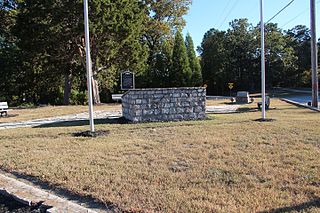
The Battle of New Hope Church was a clash between the Union Army under Major General William T. Sherman and the Confederate Army of Tennessee led by General Joseph E. Johnston during the Atlanta Campaign of the American Civil War. Sherman broke loose from his railroad supply line in a large-scale sweep in an attempt to force Johnston's army to retreat from its strong position south of the Etowah River. Sherman hoped that he had outmaneuvered his opponent, but Johnston rapidly shifted his army to the southwest. When the Union XX Corps under Major General Joseph Hooker tried to force its way through the Confederate lines at New Hope Church, its soldiers were stopped with heavy losses.

The Battle of Pickett's Mill was fought in Paulding County, Georgia, between Union forces under Major General William Tecumseh Sherman and Confederate forces led by General Joseph E. Johnston during the Atlanta Campaign in the American Civil War. Sherman sent Brigadier General Thomas J. Wood's division, supported by other formations, to turn Johnston's right flank, but the Federals were repulsed with heavy casualties when they ran into tenacious Confederate opposition. Author Ambrose Bierce, an eyewitness, later wrote an account of the battle titled The Crime at Pickett's Mill.
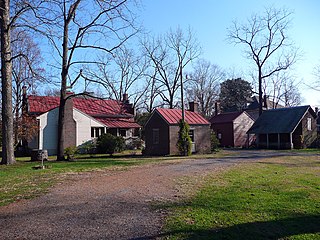
The 88th Illinois Infantry Regiment was an infantry regiment from Illinois that served in the Union Army during the American Civil War. The regiment mustered into service in September 1862 and was engaged at Perryville a month later. The unit subsequently fought at Stones River, in the Tullahoma campaign, at Chickamauga, at Missionary Ridge, in the Atlanta campaign, at Franklin, and at Nashville. The 88th Illinois especially distinguished itself at Stones River, Missionary Ridge, and Franklin. The regiment mustered out of service in June 1865.

The 92nd Regiment Illinois Infantry, also known as 92nd Illinois Mounted Infantry Regiment, was an infantry and mounted infantry regiment that served in the Union Army during the American Civil War.

The 123rd Regiment Illinois Volunteer Infantry, was an infantry and mounted infantry regiment that served in the Union Army during the American Civil War. In 1863 and 1864 it was temporarily known as the 123rd Illinois Volunteer Mounted Infantry Regiment, as part of Wilder's Lightning Brigade.

The 114th Illinois Infantry Regiment was an infantry regiment from Illinois that served in the Union Army during the American Civil War. Formed in September 1862, the regiment served in Ulysses S. Grant's Central Mississippi campaign, in the Vicksburg campaign, at Brices Cross Roads, at Tupelo, in the 1864 Missouri campaign, at Nashville, and at Spanish Fort. At Nashville, the unit participated in the decisive attack on Shy's Hill. In 1865, the regiment was reassigned as pontoniers. The regiment was mustered out in August 1865.
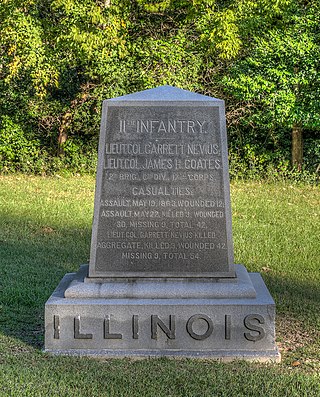
The 11th Regiment Illinois Volunteer Infantry was an infantry regiment from Illinois that served in the Union Army during the American Civil War. In April 1861, it was formed as a three-month volunteer unit, and in July 1861 it was reorganized as a three-year unit, in which role it served until the end of the war. Two of its commanding officers were promoted to brigadier general and led major units during the war. In its first major action at Fort Donelson the regiment suffered terrible losses. The 11th Illinois also fought at Shiloh, Riggins Hill, Vicksburg, First Yazoo City, Second Yazoo City, and Fort Blakely. In April 1863, the 109th Illinois Infantry Regiment was disbanded and its enlisted men transferred into the 11th Illinois. The regiment was mustered out of service in July 1865.

The 7th Texas Infantry Regiment was a unit of Confederate States Army infantry volunteers organized in 1861 that fought mostly in the Army of Tennessee during the American Civil War. The regiment was captured at Fort Donelson in 1862 and sent to Northern prison camps. After the survivors were exchanged and new recruits added, the regiment was reconstituted and fought at Raymond, Jackson, Chickamauga, Missionary Ridge, and Ringgold Gap in 1863. The unit served in the Atlanta Campaign and at Franklin, Nashville, Averasborough, and Bentonville in 1864–1865. The regiment's 65 survivors surrendered to William Tecumseh Sherman's Federal forces on 26 April 1865.

The 9th Texas Infantry Regiment was a unit of Confederate States Army infantry volunteers organized in December 1861 that fought during the American Civil War. The regiment fought at Shiloh, Perryville, and Stones River in 1862, Chickamauga in 1863, the Atlanta Campaign, Allatoona, and Nashville in 1864, and Spanish Fort and Fort Blakeley in 1865. The remaining 87 officers and men surrendered to Federal forces in May 1865. Two of the regiment's commanding officers were promoted brigadier general.

The 10th Texas Infantry Regiment was a unit of Confederate States Army infantry volunteers organized in October 1861 that fought during the American Civil War. The regiment was captured in its first major action at Arkansas Post in January 1863. After being exchanged three months later, the 10th Texas was consolidated with two other regiments and assigned to Patrick Cleburne's division. Subsequently, the consolidated regiment fought at Chickamauga, Missionary Ridge, and Ringgold Gap in 1863. After becoming an independent regiment again, the 10th Texas fought in the Atlanta Campaign, and at Franklin and Nashville in 1864. After a second consolidation the troops fought at Averasborough and Bentonville in 1865. The regiment's soldiers surrendered to Federal forces on 26 April 1865.

The 27th Texas Cavalry Regiment, at times also known as Whitfield's Legion or 1st Texas Legion or 4th Texas Cavalry Battalion, was a unit of mounted volunteers that fought in the Confederate States Army during the American Civil War. First organized as the 4th Texas Cavalry Battalion or Whitfield's Legion, the unit served dismounted at Pea Ridge and First Corinth. Additional companies from Texas were added and the unit was upgraded to the 27th Texas Cavalry Regiment or 1st Texas Legion later in 1862. Still dismounted, the unit fought at Iuka and Second Corinth. The regiment was remounted and fought at Holly Springs in 1862, Thompson's Station in 1863, and at Yazoo City, Atlanta, Franklin, and Third Murfreesboro in 1864. The regiment surrendered to Federal forces in May 1865 and its remaining soldiers were paroled.
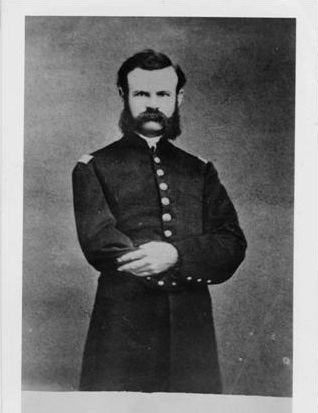
Battery F, 2nd Illinois Light Artillery Regiment was an artillery battery from Illinois that served in the Union Army during the American Civil War. The battery was organized in December 1861 at Cape Girardeau, Missouri. The unit fought at Shiloh, First Corinth, and Second Corinth in 1862 and at Vicksburg and Jackson in 1863. The battery served in the Atlanta campaign and at Nashville in 1864. It was mustered out of federal service in July 1865. The battery's first commander was John Wesley Powell who later led an exploration of the Grand Canyon.

The 24th and 25th Consolidated Texas Cavalry Regiment was a unit that originally consisted of two regiments of mounted volunteers that served in the Confederate States Army during the American Civil War. However, by the time the two regiments were consolidated, they fought as infantry. Both regiments organized as cavalry near Hempstead, Texas in April 1862 and were dismounted to fight as infantry in July 1862. The two regiments served in the same brigade and were captured at the Battle of Arkansas Post in January 1863. After being sent to Northern prison camps, the soldiers were exchanged in April 1863. Assigned to the Army of Tennessee, the two regiments were consolidated with two additional Texas cavalry regiments and in 1863 fought as infantry at Liberty Gap, Chickamauga, Missionary Ridge, and Ringgold Gap. In 1864, the other two Texas regiments were detached and the consolidated 24th and 25th fought as a separate infantry unit in the Atlanta campaign, at Franklin, and at Nashville. For the Carolinas campaign, the 24th and 25th fought at Bentonville before being reconsolidated with other Texas regiments and surrendering in April 1865.

The 13th and 20th Consolidated Louisiana Infantry Regiment was a unit of volunteers recruited in Louisiana that fought in the Confederate States Army during the American Civil War. It served only in the Western Theater. The unit was created in November 1862 by combining the veteran but diminished 13th Louisiana and 20th Louisiana Infantry Regiments to form the consolidated regiment. The regiment fought at Stones River, Jackson, Chickamauga, and Missionary Ridge in 1863. The 13th-20th Louisiana fought at Resaca, New Hope Church, Ezra Church, Jonesborough, and Nashville in 1864. The consolidation was discontinued in February 1865 and the 13th and 20th Infantry Regiments were re-consolidated with other units.

The 4th Louisiana Infantry Battalion was an infantry unit recruited from Louisiana volunteers that fought in the Confederate States Army during the American Civil War. The unit organized as a battalion in July 1861 and initially served as prison guards. In November the battalion served briefly in the Western Virginia campaign. From 1862 to Spring 1863 the battalion guarded Savannah, Georgia, Charleston, South Carolina, and Wilmington, North Carolina, fighting at Secessionville in June 1862. The unit traveled west where it fought at Jackson, Chickamauga, and Missionary Ridge in 1863. The battalion fought in the Atlanta campaign in 1864. Assigned to defend Mobile, Alabama, the battalion fought at Spanish Fort in April 1865. One month later, the remnant of the unit surrendered.

